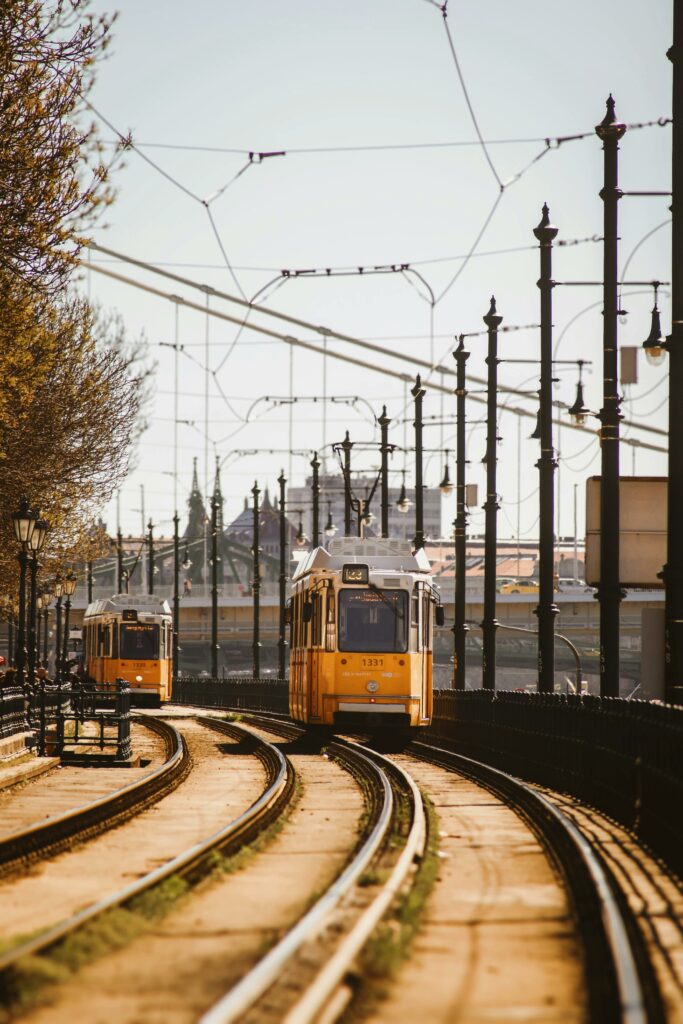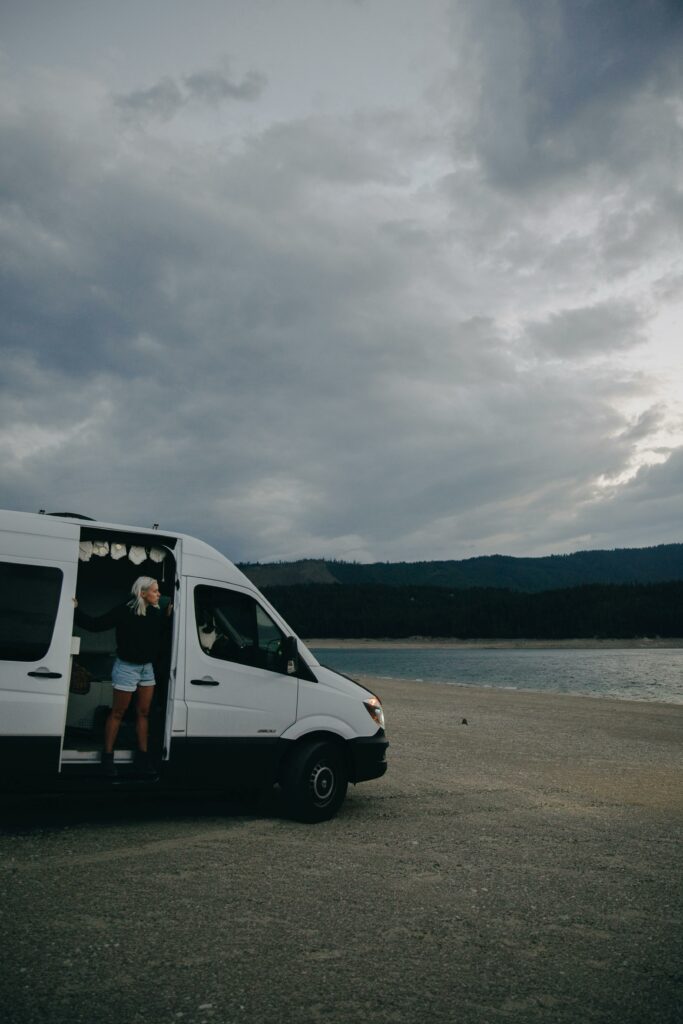
Welcome to “The Ultimate Guide To Slow Travel”, a guide for exploring the world at your own pace. In today’s fast-paced world, the concept of slow travel offers a refreshing alternative—an opportunity to immerse ourselves fully in the richness of our surroundings, free from the constraints of hurried itineraries and tight schedules.
In this guide to slow travel, we’ll delve into the art of exploring the world at your own pace, embracing the beauty of spontaneity, and forging meaningful connections with people and places along the way. Join us as we embark on a journey of mindful exploration and unforgettable experiences.
Defining Slow Travel
Slow travel is a mindful approach to exploration, prioritizing quality over quantity and embracing a leisurely pace. It involves immersing oneself in local culture, savoring authentic experiences, and fostering deeper connections with people and places, all while minimizing environmental impact and promoting sustainable tourism practices.

The Philosophy of Slow Travel
Embracing the Journey Over the Destination
In the context of slow living, embracing the journey over the destination means prioritizing presence, mindfulness, and intentionality in our daily lives. It involves savoring the small moments, relishing the process of each activity, and finding joy in the simple pleasures of life. By focusing on the journey, we cultivate a deeper appreciation for the here and now, rather than constantly striving for future goals or outcomes. This mindset encourages us to slow down, tune into our inner selves, and live with greater awareness and gratitude for each moment as it unfolds.
Sustainable and Responsible Travel
Sustainable and responsible travel involves making conscious choices to minimize our environmental impact, support local communities, and preserve cultural heritage while exploring the world at a leisurely pace.
It entails prioritizing eco-friendly transportation options, staying in locally-owned accommodations, and engaging in activities that respect natural ecosystems and wildlife.
Additionally, responsible travelers strive to learn about and respect local customs, traditions, and way of life, contributing positively to the communities they visit. By embracing sustainable and responsible travel practices, slow travelers can ensure that their journeys leave a positive legacy for future generations while fostering meaningful connections with the places they explore.
Benefits of Slow Travel
Deep Cultural Immersion
Deep cultural immersion is a profound benefit of slow travel, offering travelers the opportunity to connect authentically with the people, traditions, and heritage of a destination.
By spending extended periods in one place, slow travelers can delve beneath the surface and gain deeper insights into local customs, languages, and ways of life. This immersive experience fosters cross-cultural understanding, empathy, and appreciation for diversity, enriching the traveler’s perspective and broadening their worldview.
Moreover, deep cultural immersion allows for meaningful interactions with locals, creating opportunities for genuine friendships, exchange of ideas, and mutual learning. Through slow travel, individuals not only explore new destinations but also embark on transformative journeys of cultural discovery and personal growth.
Reduced Environmental Impact
Reduced environmental impact is another significant benefit of slow travel, stemming from its focus on sustainability, mindfulness, and responsible tourism practices.
Unlike conventional forms of travel that often involve frequent flights or long-distance transportation, slow travel encourages travelers to minimize their carbon footprint by opting for more eco-friendly modes of transport, such as walking, cycling, or using public transportation.
Additionally, staying longer in one place reduces the need for excessive energy consumption, waste generation, and resource depletion associated with constant movement. By immersing ourselves in local communities and supporting small-scale, sustainable tourism initiatives, we can contribute to the preservation of natural landscapes, wildlife habitats, and cultural heritage sites.
Ultimately, slow travel offers a more environmentally conscious approach to exploring the world, promoting stewardship of the planet for future generations.
Enhanced Well-Being
Enhanced well-being is a profound benefit of slow travel, rooted in its emphasis on mindfulness, relaxation, and connection with oneself and the world.
By slowing down the pace of exploration, travelers have the opportunity to reduce stress, unwind from the demands of daily life, and cultivate a deeper sense of inner peace and contentment. Slow travel allows us to fully immerse ourselves in the present moment, savoring the beauty of our surroundings, and engaging in meaningful experiences that nourish the soul.
Furthermore, spending more time in nature, connecting with local cultures, and forging genuine connections with others can boost mental and emotional well-being, fostering a greater sense of belonging, purpose, and fulfillment.
Ultimately, slow travel offers a holistic approach to wellness, nourishing the mind, body, and spirit while creating lasting memories and enriching the quality of life.

Planning a Slow Travel Itinerary
Choosing Destinations Mindfully
Choosing destinations mindfully in slow travel involves considering factors such as sustainability, cultural authenticity, personal interests, and travel goals. Here are some steps to help you select destinations that align with the principles of slow travel:
1. Research Sustainable Practices
Look for destinations that prioritize sustainable tourism practices, such as eco-friendly accommodations, renewable energy initiatives, and conservation efforts to protect natural resources and wildlife.
2. Support Local Communities
Choose destinations where tourism benefits local communities by supporting small businesses, artisans, and cultural heritage initiatives. Seek out opportunities to engage with local residents, learn about their way of life, and contribute positively to the local economy.
3. Consider Your Transportation Methods
Opt for destinations that are accessible by eco-friendly modes of transport, such as trains, buses, or bicycles, to minimize your carbon footprint and reduce environmental impact.
4. Embrace Cultural Authenticity
Seek destinations that offer authentic cultural experiences, traditions, and customs, rather than overly touristy or commercialized areas. Look for opportunities to immerse yourself in local culture, cuisine, and traditions, fostering meaningful connections with the destination and its people.
5. Align with Your Personal Values
Choose destinations that resonate with your personal values, interests, and travel goals. Whether you’re drawn to nature, history, art, or spirituality, prioritize destinations that offer enriching experiences that align with your passions and values.
6. Balance Popular and Off-the-Beaten-Path Destinations
Strike a balance between popular tourist destinations and off-the-beaten-path gems. While iconic landmarks and attractions may be worth visiting, also consider exploring lesser-known areas that offer unique cultural insights, natural beauty, and opportunities for authentic experiences.
7. Listen to Your Intuition
Trust your instincts and intuition when choosing destinations for slow travel. Pay attention to how a place makes you feel, whether it resonates with your values and interests, and whether it offers the kind of experience you’re seeking.
By following these steps and approaching destination selection with mindfulness and intentionality, you can ensure that your slow travel experiences are meaningful, enriching, and aligned with your values and goals.

Creating Flexible Itineraries
Creating flexible itineraries for slow travel involves striking a balance between planning and spontaneity, allowing for exploration while still ensuring a sense of direction. Here’s how to do it:
Set Broad Goals
Define overarching goals or themes for your trip, such as cultural immersion, outdoor adventure, or relaxation, but remain open to adapting these goals as your journey unfolds.
Research Options
Research potential destinations, activities, and accommodations in advance to get a sense of what’s available, but avoid overplanning every detail.
Prioritize Must-See Activities
Identify a few key attractions or experiences you don’t want to miss, but leave plenty of room for unplanned discoveries.
Stay Flexible
Allow for downtime and spontaneous exploration in your itinerary, leaving gaps between activities or allocating free days for serendipitous adventures.
Embrace Slow Travel
Slow down the pace of your itinerary, spending more time in each destination to fully immerse yourself in the local culture and atmosphere.
Be Open to Changes
Remain flexible and open-minded as you travel, embracing unexpected opportunities and adjusting your plans as needed based on weather, local events, or personal preferences.
Use Technology Wisely
Leverage technology like travel apps, maps, and online resources to stay informed and make decisions on the go, but don’t let it dictate every aspect of your journey.
Listen to Your Instincts
Trust your intuition and listen to your body and mind to determine when it’s time to rest, explore, or change course.
By creating flexible itineraries, you can embrace the spontaneity and freedom of slow travel while still ensuring a well-rounded and fulfilling experience.

Prioritizing Quality Experiences
Prioritizing quality experiences in slow travel involves focusing on meaningful, authentic, and memorable moments rather than checking off a list of attractions. Here’s how to do it:
Set Intentions
Clarify your travel goals and intentions, emphasizing the kind of experiences you value most, whether it’s cultural immersion, outdoor exploration, or relaxation.
Research Mindfully
Take the time to research destinations, activities, and accommodations that align with your interests and values, seeking out authentic experiences and local insights.
Embrace Slow Travel
Slow down the pace of your journey, spending more time in each destination to fully immerse yourself in the local culture, cuisine, and way of life.
Engage with Locals
Interact with local residents, artisans, and experts to gain insider perspectives, learn about their customs and traditions, and forge genuine connections that enhance your travel experience.
Go Beyond Tourist Hotspots
Venture off the beaten path to discover hidden gems, lesser-known attractions, and authentic experiences that offer a deeper understanding of the destination and its people.
Immerse Yourself in Nature
Spend time in nature, whether it’s hiking in national parks, strolling through local gardens, or simply enjoying scenic vistas, to reconnect with the natural world and rejuvenate your spirit.
Prioritize Quality Over Quantity
Resist the urge to cram too many activities into your itinerary and instead focus on fewer, more meaningful experiences that leave a lasting impression.
Stay Present
Practice mindfulness and presence as you travel, savoring each moment and fully immersing yourself in the here and now, rather than worrying about what’s next on your agenda.
By prioritizing quality experiences, you can cultivate a deeper appreciation for the places you visit, create lasting memories, and return home with a renewed sense of fulfillment and connection.

Slow Travel Accommodations and Transportation
Opting for Locally-Owned Accommodations
Opting for locally-owned accommodations is a key aspect of responsible and sustainable travel. Here’s why it’s important and how to do it:
Supporting Local Communities
Choosing locally-owned accommodations helps support the local economy by keeping tourism dollars within the community. This, in turn, contributes to the livelihoods of local residents and small business owners.
Preserving Authenticity
Locally-owned accommodations often reflect the unique character and charm of the destination, providing guests with an authentic and culturally immersive experience that larger chain hotels may lack.
Promoting Sustainable Tourism
Many locally-owned accommodations prioritize sustainability and eco-friendly practices, such as using renewable energy sources, reducing waste, and supporting local conservation efforts.
Fostering Cultural Exchange
Staying at locally-owned accommodations offers opportunities for meaningful interactions with hosts and staff, allowing guests to learn about local customs, traditions, and way of life firsthand.
To opt for locally-owned accommodations:
Research
Use online booking platforms or websites dedicated to promoting locally-owned accommodations to find options in your desired destination.
Read Reviews
Look for reviews and recommendations from fellow travelers to ensure that the accommodation meets your standards in terms of comfort, cleanliness, and hospitality.
Direct Booking
Whenever possible, consider booking directly with the accommodation rather than through third-party booking sites. This ensures that more of your payment goes directly to the local business.
Ask Questions
Don’t hesitate to reach out to the accommodation owners or staff to inquire about their sustainability practices, community involvement, and commitment to supporting local initiatives.
By choosing locally-owned accommodations, you can not only enjoy a more authentic and enriching travel experience but also make a positive impact on the communities you visit.

Sustainable Transportation Choices
Making sustainable transportation choices is essential for minimizing your carbon footprint and reducing environmental impact while traveling. Here’s how to opt for eco-friendly transportation options:
Public Transportation
Utilize public transportation systems such as buses, trains, trams, and subways whenever possible. Public transit not only reduces greenhouse gas emissions but also helps alleviate traffic congestion and supports local infrastructure.
Walking and Cycling
Explore your destination on foot or by bicycle to reduce reliance on motorized transportation. Walking and cycling not only provide a low-carbon way to get around but also allow you to immerse yourself in the local environment and discover hidden gems off the beaten path.
Car-Sharing and Ride-Sharing
Consider car-sharing or ride-sharing services for longer journeys or when public transportation is not available. Sharing rides with others helps reduce the number of vehicles on the road, lowering emissions and conserving energy. Plus, you can meet a wide array of people from doing this. Bonus: If you can, opt for an electric vehicle.
Supporting Sustainable Transport Providers
Choose transportation providers that prioritize sustainability and eco-friendly practices. Look for companies that invest in fuel-efficient vehicles, offset carbon emissions, and implement measures to minimize environmental impact.
Reduce Air Travel
Air travel is one of the most carbon-intensive forms of transportation. Whenever feasible, consider alternative modes of travel such as train or bus for shorter distances. More on this in the following section.
Offset Carbon Emissions
If air travel is unavoidable, consider offsetting the carbon emissions from your flights by investing in verified carbon offset projects. These projects support renewable energy, reforestation, and other initiatives that help mitigate climate change.
By making conscious choices about transportation during your travels, you can reduce your environmental footprint and contribute to more sustainable and responsible tourism practices.
Minimizing Flying and Embracing Slower Modes
Minimizing flying and embracing slower modes of transportation is a sustainable approach to travel that reduces carbon emissions and promotes a deeper connection with the journey. Here’s how to do it:
Choose Overland Travel
Opt for overland transportation options such as trains, buses, or ferries for shorter distances or regional travel. These modes of transport are often more environmentally friendly and offer opportunities to enjoy scenic routes and local culture along the way.
Plan Multi-Destination Trips
Instead of flying directly to your destination, consider planning multi-destination trips that incorporate several stops along the way. This allows you to break up long journeys into manageable segments and explore different destinations without relying solely on air travel.
Take Train Journeys
Train travel offers a comfortable and sustainable alternative to flying for medium to long-distance trips. Choose scenic train routes or sleeper trains for overnight journeys, allowing you to relax and enjoy the scenery while minimizing your carbon footprint.
Explore Cycling Tours
Embark on cycling tours or bikepacking adventures to explore destinations at a slower pace while reducing reliance on motorized transportation. Cycling allows you to immerse yourself in nature, engage with local communities, and enjoy the freedom of self-powered travel.
Embrace Slow Travel
Embrace the principles of slow travel by prioritizing quality over quantity, savoring the journey, and spending more time in each destination. Slow travel encourages mindfulness, cultural immersion, and a deeper appreciation for the places you visit, fostering a more meaningful travel experience.
Support Sustainable Tourism Initiatives
Choose tour operators, accommodations, and transportation providers that prioritize sustainability and responsible tourism practices. Look for companies that minimize environmental impact, support local communities, and promote ethical travel experiences.
By minimizing flying and embracing slower modes of transportation, you can reduce your carbon footprint, support sustainable tourism, and enjoy a more enriching and mindful travel experience.
Slow Travel Tips for Immersive Experiences
Engaging with Locals
Engaging with locals is an enriching aspect of travel that fosters cultural exchange, authentic experiences, and meaningful connections. Here’s how to engage with locals during your travels:
Strike up Conversations
Be open, friendly, and approachable, and don’t hesitate to strike up conversations with locals you encounter, whether it’s shopkeepers, restaurant staff, or fellow travelers. Ask questions, show genuine interest in their culture and way of life, and be willing to share stories about your own experiences.
Participate in Local Activities
Seek out opportunities to participate in local activities, festivals, and events happening in the community. Whether it’s joining a cooking class, attending a cultural performance, or volunteering for a community project, getting involved allows you to connect with locals and gain insight into their traditions and customs.
Support Local Businesses
Choose locally-owned restaurants, shops, and accommodations over chain establishments whenever possible. Not only does this support the local economy, but it also provides opportunities to interact with locals who are passionate about sharing their culture and heritage.
Learn the Language
Even basic language skills can go a long way in fostering connections with locals. Make an effort to learn a few key phrases in the local language, such as greetings, thank you, and please, and use them whenever possible. Locals appreciate the effort, and it can lead to more meaningful interactions.
Stay with Locals
Consider staying with local hosts through homestay programs, vacation rentals, or community-based accommodations. Staying with locals provides an intimate glimpse into their daily lives, customs, and traditions, and allows for deeper cultural immersion.
Respect Local Customs
Be respectful of local customs, traditions, and etiquette when engaging with locals. Take the time to learn about cultural norms regarding dress, behavior, and social interactions, and adapt accordingly to show respect for the local culture.
Be Curious and Open-minded
Approach interactions with an open mind and a genuine curiosity about the lives and perspectives of the people you meet. Be willing to step outside your comfort zone, try new things, and embrace the differences that make each destination unique.
By engaging with locals during your travels, you not only gain a deeper understanding of the places you visit but also forge meaningful connections and create lasting memories.

Trying Local Cuisine and Traditions
Engaging with locals and trying local cuisine and traditions are integral aspects of immersive travel experiences that foster cultural understanding and connection. Here’s how you can do this:
Dine at Local Eateries
Seek out authentic local restaurants, cafes, and markets where you can sample traditional cuisine prepared by local chefs and artisans. Opt for dishes made with locally-sourced ingredients and flavors that reflect the region’s culinary heritage.
Participate in Cooking Classes
Sign up for cooking classes or culinary workshops led by local chefs to learn about traditional cooking techniques, ingredients, and recipes. Engage in hands-on experiences that allow you to prepare and savor authentic dishes while gaining insight into local culinary culture.
Attend Cultural Festivals and Events
Check out cultural festivals, food markets, and community events happening during your visit to immerse yourself in local traditions and celebrations. Experience live music, dance performances, art exhibitions, and other cultural activities that showcase the region’s heritage and creativity.
Explore Neighborhoods Off the Beaten Path
Venture beyond tourist areas to explore residential neighborhoods and local communities where you can interact with residents, shop at family-owned businesses, and experience everyday life. Strike up conversations with shop owners, artisans, and residents to learn about their stories, customs, and perspectives.
Participate in Homestays or Community-Based Tourism
Consider staying with local families through homestay programs or community-based tourism initiatives that offer authentic and immersive experiences. Engage in daily activities, share meals with your hosts, and gain firsthand insight into local life and culture.
Support Local Artisans and Craftsmanship
Purchase souvenirs, handicrafts, and artisanal products directly from local makers and artisans to support traditional craftsmanship and sustainable livelihoods. Visit artisan workshops, markets, and cooperatives to learn about traditional crafts and techniques passed down through generations.
By engaging with locals and embracing local cuisine and traditions, you can deepen your connection to the places you visit, foster meaningful cross-cultural exchanges, and create lasting memories that transcend borders.
Practicing Mindful Photography
A large part of travel is taking pictures of everything that we see and do. The downside to this is that we sometimes take so many pictures that our camera cards fill up or we run out of film and we have so many photos that it becomes a really overwhelming task to select the best ones.
Practicing mindful photography is a way to capture the essence of your travel experiences while staying present in the moment. Here’s how to do this:
Set an Intention
Before taking a photo, take a moment to pause and set an intention for your photography. Ask yourself what you want to capture or convey with your images, whether it’s the beauty of nature, the energy of a bustling market, or the serenity of a quiet street.
Engage Your Senses
Use photography as a tool to engage your senses and deepen your connection to your surroundings. Notice the colors, textures, sounds, and smells around you, and try to capture these sensory experiences in your photos.
Practice Awareness
Be fully present in the moment as you frame your shots. Pay attention to the composition, lighting, and perspective, and strive to capture the essence of the scene in front of you.
Slow Down
Resist the urge to rush through your photography and take time to observe and appreciate the details. Slow down your pace, take a few deep breaths, and allow yourself to be fully immersed in the present moment before pressing the shutter button.
Focus on Quality Over Quantity
Instead of snapping photos indiscriminately, leading to an overwhelming amount of photos, focus on capturing a few meaningful images that convey the essence of your experience. Look for moments of beauty, emotion, or significance, and strive to tell a story with your photography.
Express Your Creativity
Use photography as a creative outlet to express your unique perspective and vision. Experiment with different angles, compositions, and techniques to create images that reflect your personal style and interpretation of the world around you.
Reflect and Connect
Take time to reflect on your photography and the experiences it captures. Use your images as a way to connect with others and share your travel stories, insights, and impressions.
By practicing mindful photography, you can enhance your travel experience, cultivate a deeper appreciation for your surroundings, and create meaningful images that reflect the richness and diversity of the world.

Overcoming Challenges of Slow Travel
Overcoming challenges of slow travel requires patience and adaptability to fully embrace the journey. Here’s how to navigate some of the more common obstacles:
Unpredictable Schedules
Embrace the flexibility of slow travel and accept that schedules may change unexpectedly. Stay adaptable and be prepared to adjust your plans in response to delays, cancellations, or unforeseen circumstances.
Language Barriers
Patience is key when facing language barriers in unfamiliar destinations. Take the time to learn basic phrases or use translation apps to communicate effectively. Embrace non-verbal communication and be open to learning from locals.
Limited Amenities
Slow travel often involves staying in remote or less-developed areas with limited amenities. Embrace the opportunity to disconnect from modern conveniences and appreciate the simplicity of your surroundings. Plan ahead by packing essentials and adopting a minimalist mindset.
Cultural Differences
Embrace cultural differences as part of the travel experience. Be respectful of local customs, traditions, and norms, even if they differ from your own. Approach unfamiliar situations with curiosity and openness, seeking to learn and understand rather than judge.
Loneliness or Isolation
Slow travel can sometimes feel isolating, especially when exploring remote destinations or traveling solo. Cultivate connections with locals and fellow travelers through shared activities, cultural exchanges, and community events. Stay connected with loved ones back home through regular communication.
Unexpected Challenges
Approach challenges with a positive mindset and a sense of resilience. View obstacles as opportunities for growth and learning, rather than setbacks. Draw on your inner resources, problem-solving skills, and support networks to overcome challenges with grace and determination.
By cultivating patience and adaptability, you can navigate the challenges of slow travel with resilience and grace, allowing you to fully embrace the journey and make the most of your travel experiences.

Reflecting on Slow Travel Experiences
Journaling and Reflection
Reflecting on slow travel experiences through journaling and reflection is a powerful way to deepen your understanding and appreciation of the journey. Here’s how to harness the incredible power of journaling:
Capture Moments
Use your journal to capture memorable moments, encounters, and insights from your slow travel experiences. Write about the places you’ve visited, the people you’ve met, and the emotions you’ve felt along the way.
Express Gratitude
Take time to express gratitude for the opportunities and experiences you’ve encountered during your slow travel journey. Reflect on the beauty of nature, the kindness of strangers, and the lessons learned along the way.
Explore Emotions
Dive into your emotions and feelings surrounding your travel experiences. Reflect on moments of joy, awe, and wonder, as well as challenges and obstacles overcome. Use your journal as a safe space to explore and process these emotions.
Set Intentions
Set intentions for your slow travel journey and revisit them regularly in your journal. Reflect on your initial goals and aspirations, and evaluate how your experiences align with these intentions. Use this process to guide your future travels and personal growth.
Learn and Grow
Use journaling as a tool for personal growth and self-discovery. Reflect on the lessons learned from your slow travel experiences, both about the world around you and about yourself. Identify areas for growth and development, and set intentions for continued learning and exploration.
Celebrate Achievements
Celebrate your achievements and milestones along the way. Acknowledge your resilience, courage, and adaptability in navigating the challenges of slow travel. Use your journal to record and celebrate these moments of triumph.
Visualize the Future
Visualize your future travel adventures and aspirations in your journal. Dream big and set goals for future slow travel experiences, whether it’s exploring new destinations, immersing yourself in different cultures, or embarking on meaningful adventures.
By incorporating journaling and reflection into your slow travel experiences, you can cultivate mindfulness, gratitude, and self-awareness, enriching your journey and fostering personal growth along the way. For more information on journaling, check out my post Journaling 101: A Guide for Beginners.
Sharing Stories
Reflecting on slow travel experiences and sharing stories is a powerful way to connect with others and deepen the impact of your journey. Here’s how to embrace storytelling as a means of reflection:
Capture Memories
Use storytelling to capture the essence of your slow travel experiences. Share vivid descriptions of the places you’ve visited, the people you’ve met, and the adventures you’ve embarked upon. Paint a picture with words that transports your audience to the heart of your journey.
Highlight Insights
Reflect on the insights and lessons learned during your slow travel adventures. Share moments of personal growth, cultural discoveries, and unexpected revelations. Use storytelling as a way to distill complex experiences into meaningful narratives that resonate with your audience.
Celebrate Connections
Celebrate the connections forged through slow travel by highlighting the people you’ve encountered along the way. Share stories of kindness, hospitality, and camaraderie experienced during your journey. Shine a spotlight on the individuals who have enriched your travel experience and left a lasting impression.
Inspire Others
Use storytelling to inspire others to embark on their own slow travel adventures. Share the transformative power of immersive travel experiences and the profound impact they can have on personal growth and cultural understanding. Encourage others to step out of their comfort zones and embrace the beauty of slow travel.
Encourage Reflection
Encourage reflection and introspection among your audience by posing thought-provoking questions and prompts. Invite them to reflect on their own travel experiences and share their stories and insights. Foster a sense of community and connection through shared storytelling and dialogue.
Embrace Authenticity
Embrace authenticity in your storytelling by sharing both the highlights and the challenges of slow travel. Be honest and transparent about the realities of life on the road, including moments of vulnerability, homesickness, and cultural misunderstandings. Use storytelling as a tool for authenticity and vulnerability.
Create Lasting Memories
Reflecting on our slow travel experiences through storytelling allows us to cherish memories, celebrate connections, and inspire others. By sharing our stories authentically and embracing the transformative power of immersive travel, we foster a sense of community and cultural understanding.
Let us continue to embrace the beauty of slow travel, savoring each moment, and weaving our experiences into the rich tapestry of human connection. Together, through our shared stories, we can create a world filled with empathy, curiosity, and appreciation for the diverse landscapes and cultures that enrich our lives.

Leave a Reply